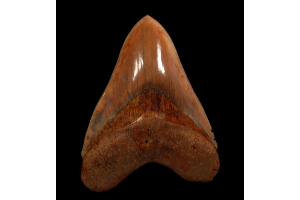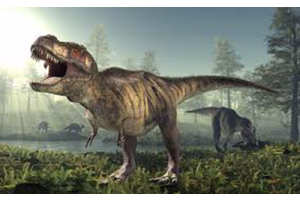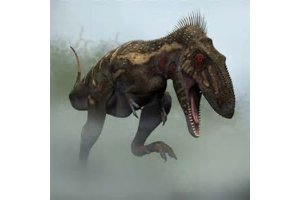Page 9 - Home Page Latest Post
- - August 05, 2025
It begins with a single fossil—cold in the hand, serrated at the edge, shaped by time into a symbol of prehistoric dominance. One glance is enough. The texture, the weight, the silent story embedded in its enamel—it captures attention, then obsession. That’s the moment it happens: the realization that this belongs not in a museum, but in your personal collection.
You wouldn’t be the first to feel it. Interest in megalodon shark teeth for sale hasn’t simply risen—it’s surged. Not because a trend told people to care. Because the fossil itself did. Because once someone sees that heart-shaped shard of marine terror, they don’t forget it. It doesn’t politely suggest. It declares, with quiet certainty: I once tore through whales.
That is all it takes. From that moment forward, these teeth vanish from our inventory at a pace that rivals the predator that created them.
The apex predator of apex predators
The Megalodon was not merely large—it was a true apex predator, unparalleled in prehistoric
- - August 05, 2025
You probably didn’t set out today looking to uncover a prehistoric dental anomaly. But now that you’re here, it’s worth leaning in.
Somewhere beneath the sediment-heavy layers of Morocco’s phosphate-rich terrain, a story has been waiting. It isn’t told in words. It’s etched in enamel, twisted in form, compressed in angles that feel both deliberate and accidental. A tooth, once nestled in the jaw of a megalodon—the ocean’s most formidable predator—emerged with an unexpected shape. Warped at the crown and compressed at the base. Split cleanly down the center like a rift in time.
At first glance, it might look broken. Imperfect. But these deviations aren’t mistakes. They’re pathologies—developmental mutations caused by trauma, spatial pressure, or biological quirks deep within the shark’s physiology. They’re rare, raw, and completely natural. And when you see a pathological megalodon tooth for sale, you’re not just looking at a fossil. You’re looking at a prehistoric record of biological
- - August 05, 2025
Fossils are like puzzle pieces from Earth's deep past—and sometimes, even one fragment can challenge long-standing beliefs. In the realm of paleontology, few fossils generate as much excitement—or skepticism—as a real megalodon tooth. When one such tooth surfaces, it often sends ripples through the scientific community, raising critical questions: Is it authentic? Does it belong to the iconic Megalodon? And could it reshape our understanding of prehistoric sharks?
While most fossils confirm what we already suspect, every now and then, a single discovery adds new layers to our knowledge. Could a solitary tooth be enough to revise our understanding of ancient shark evolution? Let’s dive into the significance of this possibility.
Why Are Megalodon Teeth So Fascinating?
The Megalodon, whose name means "big tooth," lived approximately 23 to 3.6 million years ago and is considered one of the largest and most fearsome predators in Earth's history. Some estimates suggest it grew up to 60 feet
- - August 04, 2025
From bold accessories to meaningful keepsakes, the fashion world has always found new ways to blend aesthetics with personal expression. Today, a surprising trend is resurfacing from the depths—quite literally. Ancient relics, once locked away in museum displays, are now finding their place in contemporary wardrobes. These are not mere ornaments; they’re wearable pieces of history. As summer approaches and beachwear takes center stage, more individuals are turning to jewelry that not only complements their style but tells a story. Fossils, especially shark teeth, have entered this space as a captivating blend of raw nature and rugged charm.
And right in the middle of this wave is the megalodon shark tooth necklace, a powerful token that encapsulates the legacy of one of the ocean’s most formidable predators. Its bold presence, dark gleam, and historical value make it a stand-out accessory for those who crave authenticity and uniqueness in what they wear.
The Power of Prehistoric Appeal
- - August 04, 2025
Few fossils command as much awe as a Megalodon tooth, monumental relics from a prehistoric oceanic titan. Yet, among the world’s Megalodon finds, those from Chile hold a unique distinction. Our remarkable preservation, rich coloration, and scientific significance place them in a league of their own.
Extracted from the Caldera phosphate mining area in Chile’s Atacama Desert near Copiapó, these teeth hail from the Bahia Inglesa Formation, dating back 4 to 6 million years. This site has become synonymous with some of the finest marine fossils from the late Miocene to early Pliocene.
This blog explores why Chile Megalodon teeth are widely regarded as some of the best-preserved marine fossils worldwide, and why they have become prized treasures for collectors and scientists alike.
The Atacama Desert: Nature’s Perfect Fossil Vault
The Atacama Desert’s extreme dryness is crucial to why fossils from this region are so pristine. Without moisture to accelerate decay or cause erosion, these fossils
- - August 04, 2025
Few fossils inspire as much wonder and excitement as the massive teeth of the prehistoric Megalodon shark, an apex predator that ruled the ancient oceans millions of years ago. Among the many fossilized shark teeth discovered worldwide, the Megalodon teeth unearthed from Peru stand out for their exceptional beauty, rarity, and remarkable preservation. These fossils are not just scientific artifacts but breathtaking natural artworks, treasured by collectors, paleontologists, and enthusiasts alike.
Buried deep within Peru’s arid desert regions lie fossil beds that have preserved these majestic teeth for millions of years. What makes Peruvian Megalodon teeth so special is their vivid coloration, near-perfect condition, and the fascinating story they tell about prehistoric marine life.
This blog explores the unique geological settings that gave rise to these Peru Megalodon tooth, the distinct characteristics that make them so desirable, and why it holds a coveted place in the world of fossil
- - August 04, 2025
Few fossils evoke the awe and fascination of an authentic Megalodon tooth from Indonesia. These teeth are relics of a time when the ocean was dominated by the largest predator to have ever lived, the Megalodon shark. Unearthed primarily from the Miocene-aged fossil beds of West Java, these teeth are prized not only for their sheer size but for their remarkable preservation and distinctive coloration.
Among collectors and paleontologists alike, the quest to obtain and preserve a genuine Indonesian Megalodon tooth is a challenge compounded by the increasing number of replicas and restorations on the market.
This comprehensive guide will equip you with the knowledge to confidently identify and authenticate these biggest Megalodon tooth fossils ever found, ensuring your prized specimen is 100% genuine.
Why Indonesian Megalodon Teeth Are So Highly Valued
The fossil beds of West Java, Indonesia, are world-renowned for producing Megalodon teeth that are often considered the finest available.
- - August 04, 2025
It’s one thing to find a fossilized shell or fish scale, but quite another to uncover a relic from the jaws of a long-extinct giant. Megalodon teeth—those palm-sized, serrated wedges—aren’t simply reminders of a colossal predator. They're stories locked in stone, whispering across eras, shaping scientific curiosity, and stirring the dreams of collectors. For many, these teeth are a bridge between our present world and a marine past that few can imagine.
Right at the heart of this intrigue lies a common curiosity: the worth of a megalodon tooth. That single question—asked with a mix of wonder and investment interest—often uncovers more than a price tag. It introduces people to a realm where geology meets art, science meets mystery, and nature’s ferocity meets the calm of fossilized remains.
Let’s take a deeper look.
What Makes a Megalodon Tooth So Captivating?
To appreciate the fascination, it helps to understand the magnitude of the megalodon itself. Estimated to grow up to 60 feet long,
- - August 04, 2025
Beneath the treacherous waters of ARK: Survival Evolved, a thrilling expedition awaits those daring enough to explore the deep sea. The digital world of ARK is more than just survival—it’s an immersive quest for rare treasures, and few items are as captivating or valuable as the Megalodon tooth. These prehistoric relics serve as powerful tools in your crafting arsenal, symbols of conquest, and crucial components for high-tier gameplay.
Learning the intricate factors that led to the discovery of megalodon teeth in ARK is not merely a matter of chance. It demands careful planning, a deep reservoir of knowledge, and unwavering perseverance. As we embark on this exhilarating underwater adventure together, we will delve into the mysteries and strategies that will empower you to unearth these elusive treasures hidden beneath the ocean’s depths during your thrilling deep-sea explorations. Prepare to unlock the secrets of the deep and navigate the vibrant ecosystems that hold the remnants
- - August 04, 2025
Some fossils don’t just capture history, they command it. Among these, few can rival the mystique and magnificence of a Georgia Megalodon tooth. These fossilized teeth are not mere remnants; they are monumental trophies forged in ancient seas, bearing the marks of the largest predator that ever dominated Earth’s oceans. To hold one is to hold power, beauty, and a direct connection to a prehistoric era few can even imagine.
Georgia’s coastal rivers have gifted collectors with some of the most spectacular Megalodon teeth on the planet, teeth that combine astonishing size, rare coloration, and flawless preservation. For fossil enthusiasts, owning one is the ultimate achievement, a dream fueled by the perfect storm of rarity and natural artistry.
This blog explains what makes the Georgia Megalodon tooth the unrivaled crown jewel of fossil collections worldwide.
The Colossal Monarch of the Miocene and Pliocene Oceans
More than five million years ago, when the Earth was sculpting its modern







